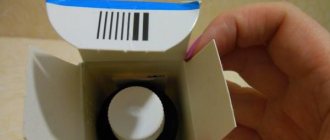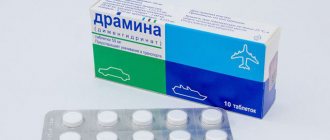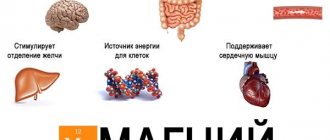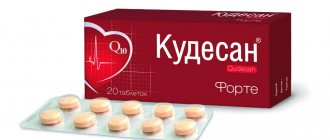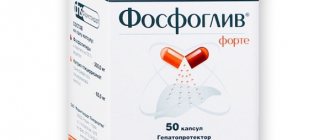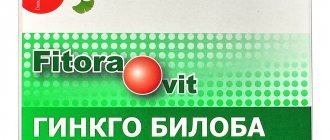Release form, packaging and composition of the drug Clinical-pharmacological group Pharmaco-therapeutic group Pharmacological action Indications for use Method of administration and doses Side effects Contraindications for use Use in children Special instructions Drug interactions
Registration Certificate Holder:
KRKA-RUS, LLC (Russia)
ATX Code:
C01DA02
Active substance:
nitroglycerin (glyceryl trinitrate)
Dosage form:
Sustak Forte
| The drug is available with a prescription | Sustak Forte | Tab. prolong. action 6.4 mg: 25 pcs. reg. No.: P N011909/01 dated 03.11.06 - Valid |
General information about the drug
The drug "Sustak Forte" has an INN (international nonproprietary name) - "Nitroglycerin". The action of the active component of the drug is aimed at reducing preload, afterload and myocardial oxygen demand. Reducing afterload is achieved by reducing total peripheral vascular resistance. The reduction in preload occurs due to the expansion of peripheral veins.
When treated with this drug, coronary blood flow is redirected to ischemic areas of the myocardium, thereby normalizing exercise tolerance.
As stated in the instructions for use, Sustak Forte provides myocardial relief for heart failure. This occurs by reducing preload.
Nitroglycerin, which is part of the drug, is characterized by antianginal and antispasmodic activity, due to which relaxation of smooth muscles is observed.
The drug "Sustak Forte" is absorbed from the gastrointestinal tract and penetrates the liver, where its metabolism occurs. Under the influence of the enzyme nitrate reductase, trinitrite is converted into a diform, which has a vasodilating effect on blood vessels. This mechanism is triggered when the medicine is taken orally. Sublingual use of tablets prevents the passage of nitroglycerin through the liver.
Protein binding in this organ is 60%. The half-life largely depends on how the drug is taken. When taken orally, this time is 4 hours, and when taken sublingually, it takes 20 minutes. It is excreted by the kidneys in a metabolized form.
Notes
- ↑ 1 2
Nitroglycerin
(undefined)
.
Register of medicines
. ReLeS.ru (June 10, 2003). Access date: September 26, 2008. Archived March 18, 2012. - ↑ 1 2 3 4
Search in the drug database, search options: INN -
Nitroglycerin
, flags
“Search in the register of registered drugs”
,
“Search TKFS”
,
“Show lekforms” (undefined)
(inaccessible link).
Circulation of medicines
. Federal State Institution “Scientific Center for Expertise of Medical Products” of Roszdravnadzor of the Russian Federation (July 24, 2008). — A standard clinical and pharmacological article is a by-law and is not protected by copyright in accordance with part four of the Civil Code of the Russian Federation No. 230-FZ of December 18, 2006. Retrieved September 26, 2008. Archived September 3, 2011. - Nitroglycerin - Compound Summary (undefined)
.
PubChem
. The National Library of Medicine (September 16, 2004). Access date: September 26, 2008. Archived March 18, 2012. - Pelouz (undefined)
.
Great Encyclopedia of Oil and Gas
. www.ngpedia.ru. Access date: September 26, 2008. - ↑ 1234567
Marsh, Marsh, 2000. - Murrell W.
Nitro-Glycerine as a Remedy for Angina Pectoris (English) (pdf) (unavailable link) (1879). Access date: September 26, 2008. Archived March 18, 2012. - Arzhanov N.
Nitroglycerin. Discoveries and people // Health of Ukraine: medical newspaper. - 2006. - No. 22. - ICD-10 codes are given in parentheses with links to the WHO classifier.
- Palazzo FF, Kapur S., Steward M., Cullen PT
Glyceryl trinitrate treatment of chronic fissure in ano: One year's experience with 0.5% GTN paste (English) // JR Coll. Surg. Edinb.. - Department of Surgery, Queen Elizabeth Hospital, King's Lynn, UK, 2000. - June (no. 45). - P. 168-170. Archived from the original on June 6, 2012.
Composition and release form
A peculiarity of the composition of the drug is that one tablet contains 6.4 mg of nitroglycerin. Other components of the drug:
- magnesium stearate;
- sucrose;
- talc coating;
- ricin oil;
- dye;
- cellulose acetate;
- cellulose microcrystals;
- corn starch.
The drug also contains lactose and ethylcellulose. The release form of "Sustak Forte" is tablets. They can be packaged in plastic cases or bottles. One package of any type contains 25 pills.
Analogs
Among analogues, such medications are popular.
| Drug name | Active ingredient | Duration of therapeutic action | Price (in rub.) |
| Nitrocore | Nitroglycerine | Individually | From 45 |
| Sustonite | Nitroglycerine | 12-24 hours | No data |
| Nitrong Forte | Nitroglycerine | One day | No information |
Analogue
Indications for use
Sustak Forte tablets are used to prevent and relieve angina attacks. The medicine is prescribed to patients who have the following diseases and conditions:
- angina attacks;
- pulmonary edema;
- complicated heart attack with left ventricular failure;
- cardiac ischemia.
The drug can also be used as an emergency treatment for left ventricular failure and acute myocardial infarction.
Story
Ascanio Sobrero - discoverer of nitroglycerin
Nitroglycerin was discovered in 1847 by Ascanio Sobrero, who continued the work of his teacher, Théophile-Jules Pelouse, in Turin[4]. Sobrero was also the first to draw attention to the severe headache caused by testing small amounts of nitroglycerin on the tongue.
In 1849, Konstantin Hering (English) Russian, studying the pharmacological effect of nitroglycerin on volunteers, confirmed that its use quite naturally causes headaches. Hering envisioned the use of nitroglycerin as a homeopathic remedy for headaches, in accordance with his espoused doctrine of “cure like with like.”[5] The name "glonoin", given to nitroglycerin by Hering, has been preserved in homeopathy.
In 1851, Alfred Nobel joined Pelouse's research and was able to evaluate the potential of using nitroglycerin as an explosive. Having overcome the problems of handling the extremely explosive nitroglycerin and patenting his method of making explosives, he began its industrial production in Sweden. Ironically, Nobel rejected the use of nitroglycerin as a medicine, although he himself suffered from acute attacks of angina.
In addition to nitroglycerin, in the mid-19th century, scientists from Great Britain became interested in the newly discovered amyl nitrite, recognizing it as a potent vasodilator. Thomas Lauder Brenton (English) Russian, one of the founders of modern pharmacology, first used this substance to relieve angina attacks in 1867, however, noting the body's resistance to its action with frequent dosages of the drug. It has also become clear over the years that the action of amyl nitrite is shorter than that of nitroglycerin, and the side effects in the form of headaches are stronger, and many other undesirable reactions have also been discovered.
William Murrell (English)Russian first used nitroglycerin for angina in 1876, although at that time nitroglycerin was listed in the British Pharmacopoeia only as a drug for high blood pressure[5]. Murrell, a medical practitioner who worked in two London hospitals at the same time, experimentally determined the optimal dosage from the balance of effectiveness and safety: a 1% alcohol solution of nitroglycerin, 3 drops with half an ounce of water, three times a day. In this form, the drug acted much longer than amyl nitrite, and more gently. Murrell's publication [6], summing up the results of several years of research, first on himself and then on patients with angina, entered the golden fund of medicine.
A year later, pharmacist William Martindale (English) Russian. A solid form of the drug was developed: 1/100 grain of nitroglycerin in chocolate - which, in addition to ease of use, had better digestibility. In 1882, in the USA, the company Parke, Davis & Co. began to produce nitroglycerin in five different dosages[7].
The nitroglycerin industry boomed in 1900, with workers exposed to significant amounts of organic nitrate fumes. The results of exposure manifested themselves in the form of addiction to nitrates, as evidenced by the symptoms of “Monday disease”, which disappeared by the end of the week, and withdrawal syndrome - Sunday Heart Attacks [5]. All this prompted medical scientists to further research these substances.
At the beginning of the 20th century, scientists tried to establish the principle of action of nitrate-containing substances in vitro
However, despite efforts, there has been no significant advance in understanding the pharmacokinetics of these drugs[5].
It was not until 1977 that Ferid Murad established the principle of the release of nitric oxide (NO) from nitroglycerin and its effect on vascular smooth muscle[5]. In 1980, Robert Furchgott and John Zawadski
) discovered the role of the endothelium in acetylcholine-induced vasorelaxation, and in 1987, Luis Ignarro and Salvador Moncada established that it is nitric oxide that is the endothelial
-derived relaxing factor (EDRF)
[5].
Robert Furchgott, Louis Ignarro and Ferid Murad received the 1998 Nobel Prize in Physiology or Medicine for elucidating the role of nitric oxide in the regulation of vascular tone.
Other organic esters and inorganic nitrates can be used to relieve symptoms of angina, but the extremely rapid action and recognized effectiveness of nitroglycerin make it the mainstay of choice for relieving angina attacks[5].
Features of application
Many drugs that contain nitroglycerin are available without a prescription. However, only the attending physician should prescribe Sustak Forte. The dosage of the medicine largely depends on the course of the disease. For angina attacks, the medication is prescribed sublingually. The tablet should be placed under the tongue and held until completely dissolved. There is no need to swallow it. This should be done immediately after pain and discomfort occurs. The dosage is 0.5-1 mg per dose. To significantly speed up the onset of the required therapeutic effect, the tablet can be slightly crushed with your teeth.
To prevent angina attacks, Sustak Forte is taken strictly orally and washed down with water. This should be done before consuming food. In mild cases of the disease, the medicine is used 2-3 times a day, 1-2 tablets. For more complex conditions, the medication is prescribed in a dosage of 5.2 mg. The most important thing is that the maximum dose does not exceed 34.8 mg per day
In case of acute myocardial infarction, you need to take the tablet while sitting. It is recommended to take a break between doses of 10-12 hours. You need to take 1-2 tablets a day. It is best to carry out treatment in the morning or after lunch. Then the low-nitrate period will occur at night. The treatment period is determined for each patient individually, taking into account the characteristics of the disease.
You can also use other forms of drugs that can dilate blood vessels to relieve attacks. For example, “Nitroglycerin” in solution is used sublingually. During an acute attack, 1-2 drops of the drug should be kept under the tongue or applied to a piece of sugar and put in the mouth. The dosage and course of therapy are prescribed only by the attending physician.
Content
- 1. History
- 2 Pharmacological action
- 3 Pharmacokinetics
- 4 Application
- 5 Side effects
- 6 Dosage forms
- 7 Dosage regimen 7.1 Relief of angina pectoris
- 7.2 Prevention of angina
- 7.3 Transdermal
- 7.4 Cutaneous (ointment)
- 7.5 Aerosol, spray for sublingual use
Contraindications
When taking the drug "Sustak Forte", the contraindications of this drug must be taken into account. It is prohibited to use this medication for the following diseases and conditions:
- acute heart attack with low blood pressure;
- hypotension;
- aortic stenosis;
- cardiac tamponade;
- myocardial diseases;
- increased intracranial pressure;
- cerebral hemorrhage;
- angle-closure glaucoma.
It is also contraindicated to treat with this medicine in case of intolerance to the components of the drug and in the case of toxic pulmonary edema.
Overdose
It occurs if the dosage is not followed. In this case, collapse, cyanosis, and mental disorders may occur. First aid consists of placing the patient in a position with his head down and legs raised. Typically, blood pressure is completely stabilized within 15 minutes.
If this does not happen, you need to introduce vasoconstrictors and Finelephrine. If methemoglobinemia occurs, intravenous infusions of methylthioninium chloride, ascorbic acid are prescribed, as well as hemodialysis, oxygen therapy and exchange blood transfusion.
In some cases, other symptoms of overdose occur, associated with decreased blood pressure and dizziness. Sometimes the following manifestations are observed:
- visual disturbances;
- dry mouth;
- nausea;
- increased sweating.
When taking a large amount of the drug at one time (while the person is conscious), it is recommended to induce vomiting. If the patient has heavy breathing, blue lips and cold extremities, then he needs to be urgently taken to the hospital.
In some cases, an overdose causes unpredictable mental reactions, anxiety, disorientation and lethargy.
special instructions
As stated in the instructions for use, Sustak Forte can only be taken under the supervision of a physician, since this drug can provoke various side effects. During the treatment period, it is prohibited to drive a car or operate dangerous machinery. Use during pregnancy and lactation is possible only after assessing the risk to the child and the benefit to the mother.
Elderly people, as well as those who have liver disease, kidney disease, or cerebrovascular accidents, should prescribe the drug very carefully, assessing all possible risks to the patient’s health. It is prohibited to drink alcohol while taking this medication.
Price
Unfortunately, it is not possible to find information about the availability and cost of the drug in the pharmacy chain. The situation is similar for most analogues.
The main active ingredient nitroglycerin is sold in different release forms.
The price situation for Nitroglycerin is as follows:
- tablets under the tongue, 0.0005 g in a package of 40 pieces, manufactured by JSC Medisorb;
- spray in the amount of 200 doses, same manufacturer;
- ampoules for preparing a solution for intravenous infusion in the amount of 10 pieces, from Ozone LLC.
Ampoules of concentrated nitroglycerin solution are dispensed strictly according to a doctor's prescription.
Drug interactions
Nitroglycerin preparations actively interact with many medications used to treat patients with diseases of the cardiovascular system. Concomitant use of the drug with beta blockers and calcium channel blockers enhances the antianginal effect. With these same drugs, as well as MAO inhibitors, diuretics, tricyclic antidepressants, the hypotensive effect is enhanced.
To thin the blood and improve its fluidity, patients with ischemia are prescribed acetylsalicylic acid. When administered in parallel, this medication enhances its antiplatelet properties. At the same time, the vasodilator effect of the drug “Sustak Forte” is reduced. The simultaneous use of Sustak Forte and Novocainamide is prohibited. If this rule is neglected, the hypotensive effect can be quite pronounced, even to the point of collapse.
When taken simultaneously with Quinidine, orthostatic collapse may occur. In this case, a sudden rise from bed can lead to a short-term loss of consciousness. "Sumatritan" and "Rizatriptan" provoke spasm of the coronary arteries, and "Sildenafil" can cause repeated myocardial infarction. “Histamine” and “Acetylcholine” in combination with “Sustak Forte” lose their activity. Consumption of alcoholic tinctures or alcohol can cause dizziness.
Side effect
From the cardiovascular system:
dizziness, headache, tachycardia, skin hyperemia, feeling of heat, arterial hypotension; rarely (especially with overdose) - collapse, cyanosis.
From the digestive system:
nausea, vomiting.
From the side of the central nervous system:
rarely (especially in case of overdose) - anxiety, psychotic reactions.
Allergic reactions:
rarely - skin rash, itching.
Local reactions:
slight itching, burning, redness of the skin.
Other:
methemoglobinemia.
Reviews from patients and doctors
According to reviews, the drug "Sustak Forte" effectively fights angina pectoris, which makes it possible to prescribe it for the treatment and prevention of attacks. The most important thing is to maintain the correct dosage and interval between doses of the drug. Otherwise, negative manifestations may occur.
Most experts leave positive reviews regarding this medication, as it is highly effective. This medicine is very convenient to take. In this case, the therapeutic effect lasts for a long time.
Some patients sometimes complain of various side effects. This is mainly due to the individual reaction of the human body to the chemicals that make up the medicine. In addition, adverse reactions are sometimes a consequence of self-medication. That is why you should definitely consult a doctor before starting to take this medication.
Clinical researches
In 2000, the effectiveness of topical nitroglycerin ointment 0.5% for the treatment of chronic anal fissures was evaluated in the UK (60.160.1). The study found that a 6-week course of therapy leads to the healing of anal fissures with a 73% success rate. At the same time, during 6 months of follow-up of the subjects, no cases of relapse of the disease were identified. At the same time, the treatment was accompanied by a significant proportion of side effects in the form of headaches (84%) and, partly as a consequence of this, insufficient accuracy of patient compliance with medical prescriptions[9].

